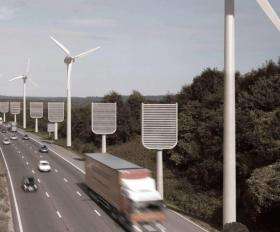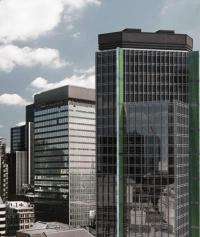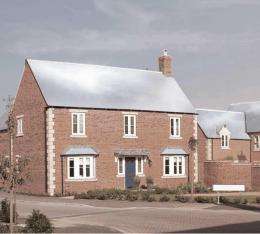August 28, 2009 weblog
Forests of Artificial Trees Could Slow Global Warming

(PhysOrg.com) -- A new study on how technology could help to regulate climate change has studied hundreds of ideas, and selected three considered practical and able to be implemented quickly. The report's authors propose the construction of forests of artificial trees and installing tubes of algae on the sides of buildings to absorb carbon dioxide. They also proposed painting the roofs of buildings white to keep the Earth cool by reducing the amount of solar radiation absorbed.
The engineers from Britain's Institution of Mechanical Engineers (IME) have asked their government for an investment of 10 million pounds (around 16.3 million dollars) in these ideas to counter the threat to Britain posed by global warming.
One of the authors of the report, Dr Tim Fox, said geo-engineering techniques could buy us a few extra years' breathing space while we transition to a low-carbon world, and may help ward off the climate change scenarios we fear. The report claimed global temperatures could rise by as much as 6°C in the next 90 years if we don't act soon, and the results would include major refugee movements as well as food and water shortages.

One proposal was the building of forests of artificial trees. Each synthetic tree could capture up to 10 tons of CO2 a day, which is thousands of times more than a real tree. Each tree would cost around $24,400, and a forest of 100,000 of them could be constructed within the next couple of decades using existing technologies. A forest that size would be able to remove 60% of the UK's total CO2 emissions. Globally, forests of five to ten million trees could absorb all the CO2 from sources other than power plants.
The trees would have a special synthetic filter that absorbs carbon dioxide. When the filters had absorbed their load of CO2 they would be replaced with new filters and the old ones would be stored in empty gas and oil reservoirs, such as depleted oil wells in the North Sea. The trees are already at the prototype stage and their design is well-advanced. The prototype is the size of an average shipping container.
Another proposal put forward by the study was to install transparent tubes filled with algae on the outside of buildings. The "algae based photobioreactors", as they call them, would absorb carbon dioxide from the atmosphere, and could later be turned into charcoal, which could then be buried to trap the carbon dioxide.

The third idea proposed by the IME was to paint city roofs white to reflect sunlight back into space and prevent it warming the Earth. Cities can be up to 4°C hotter than suburban areas, and reflective roofs could reduce the need for cooling and save up to 60% of a building's energy use.
Dr Fox warned that geo-engineering ideas such as those proposed are not a silver bullet that will solve all the problems, and they would need to be used in conjunction with other measures such as reducing our emissions and adapting to changes in the climate.
More information: Read the full Institution of Mechanical Engineers report
© 2009 PhysOrg.com


















